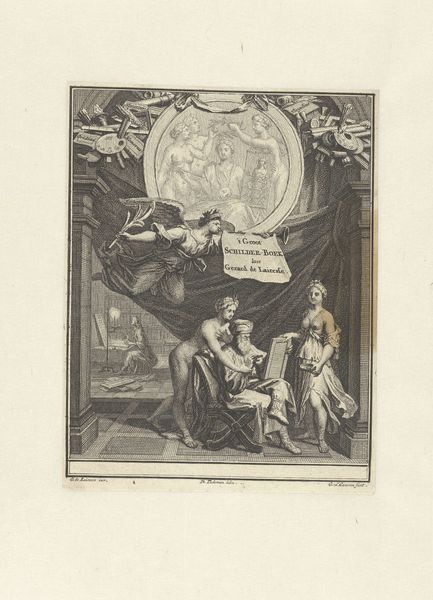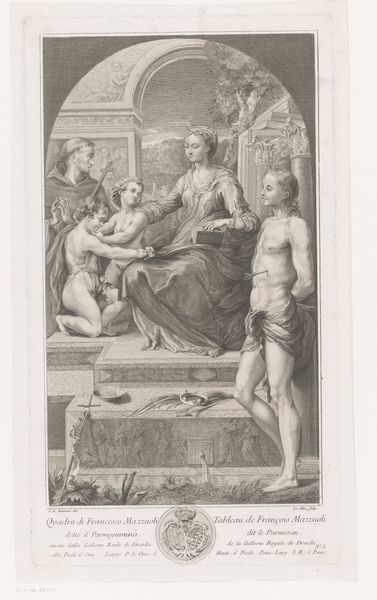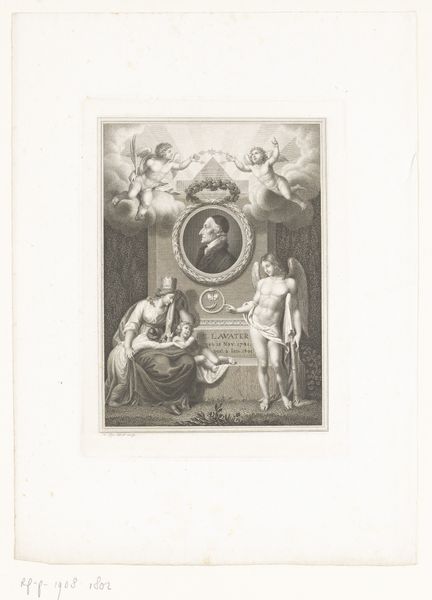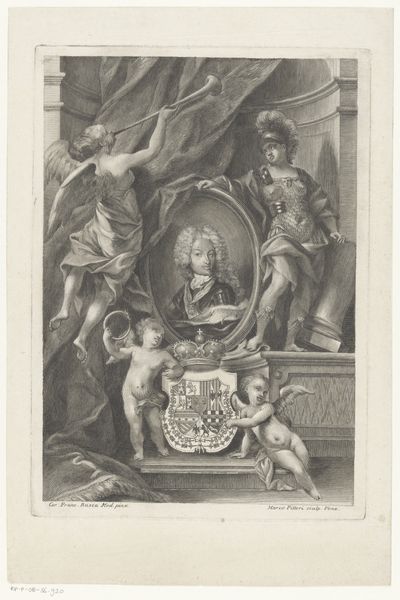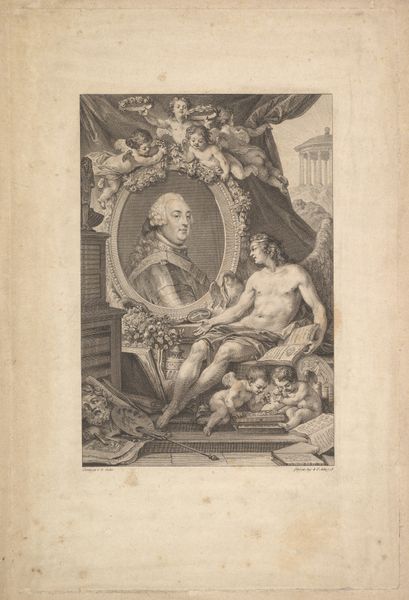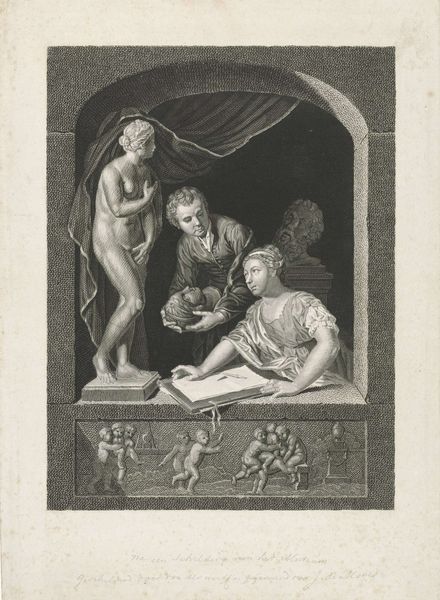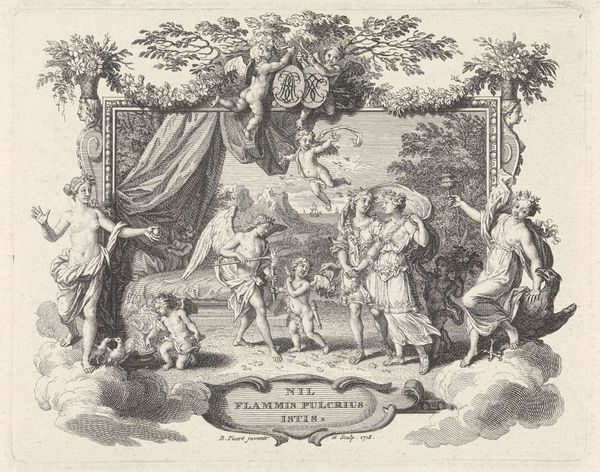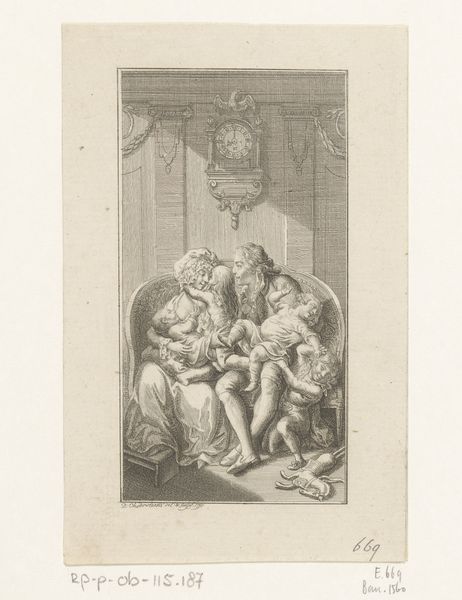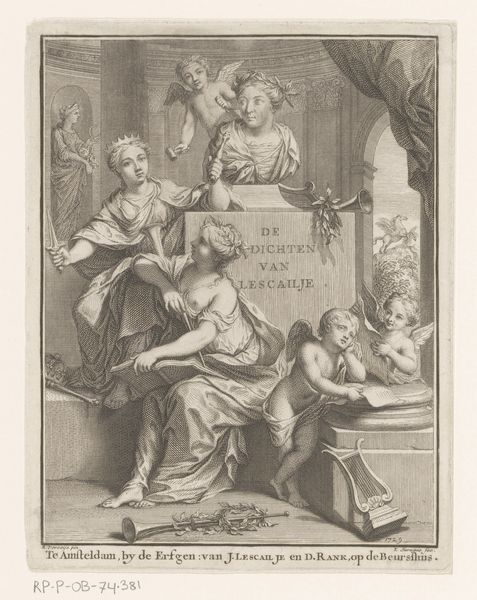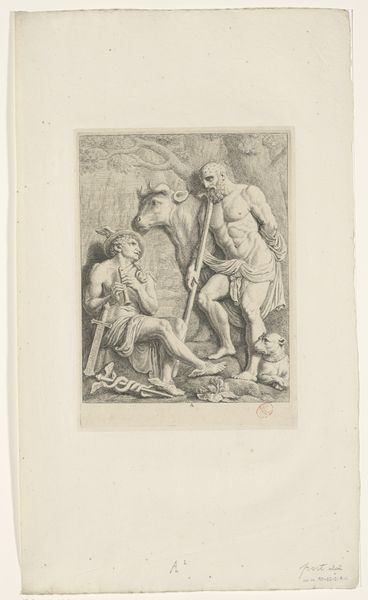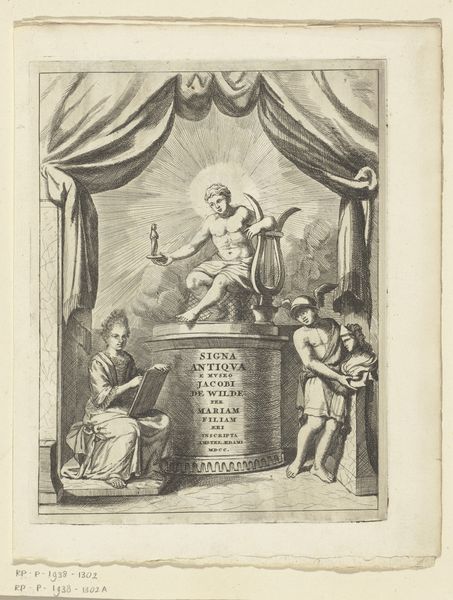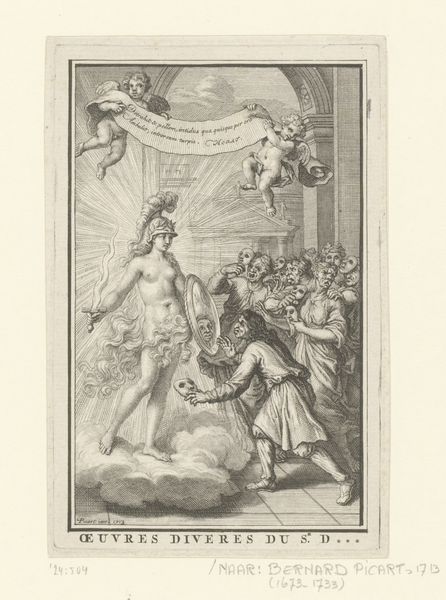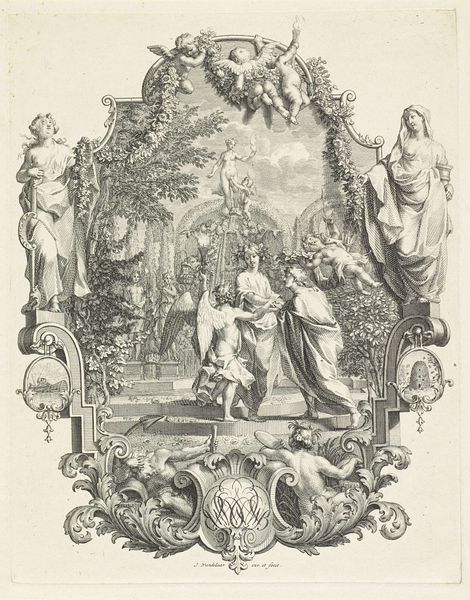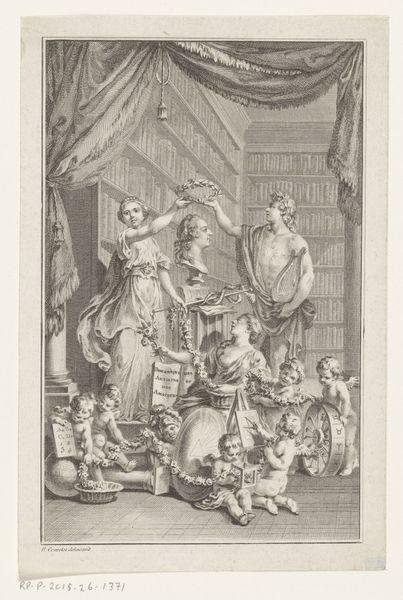
print, engraving
#
portrait
#
neoclacissism
#
allegory
# print
#
old engraving style
#
figuration
#
historical fashion
#
line
#
history-painting
#
engraving
Dimensions: height 378 mm, width 265 mm
Copyright: Rijks Museum: Open Domain
Editor: So this engraving, "Grafmonument met portret van Johann Kaspar Lavater" by Johann Heinrich Lips, dating from around 1801-1817, is quite striking. The somber scene contrasts sharply with the almost theatrical arrangement of figures. I’m curious about the choices made in representing Lavater. What’s your interpretation? Curator: It's crucial to understand Lips’s work within its historical context. This is Neoclassicism, deeply intertwined with the politics of imagery. It aims to legitimize itself by drawing explicit connections to the art of classical antiquity, doesn’t it? In this case we see an idealized vision of grief and remembrance memorializing Lavater, not necessarily the man himself, but an idealized representation crafted for public consumption. Notice the allegorical figures and the classical architectural elements: What purpose do you think these choices serve? Editor: Well, the figures definitely elevate Lavater beyond a simple portrait. And I guess, the architecture lends it gravitas, giving him an almost timeless quality. But it feels staged, like propaganda rather than genuine grief. Curator: Precisely. The composition presents a carefully constructed image intended to shape public perception of Lavater after his death. Consider how this memorial appropriates and adapts Neoclassical tropes. Does the context change your initial feelings about it at all? Editor: Absolutely. Knowing the political implications makes me reconsider my initial interpretation. It moves away from pure aesthetic appreciation and makes me examine the underlying motives behind creating such a public display of mourning. Curator: Indeed. It shows how art can become a tool to establish and maintain certain cultural narratives, using someone’s memory as a building block for broader ideas of the time. Editor: That's fascinating. I’ll definitely look at Neoclassical works differently from now on, considering the societal forces at play. Thanks. Curator: Likewise. Thinking critically about the power dynamics embedded within seemingly straightforward imagery opens up new perspectives on art history.
Comments
No comments
Be the first to comment and join the conversation on the ultimate creative platform.
